Exhibition shines spotlight on low-profile Tong Jun's key contribution to the architectural community, Zhang Kun reports.
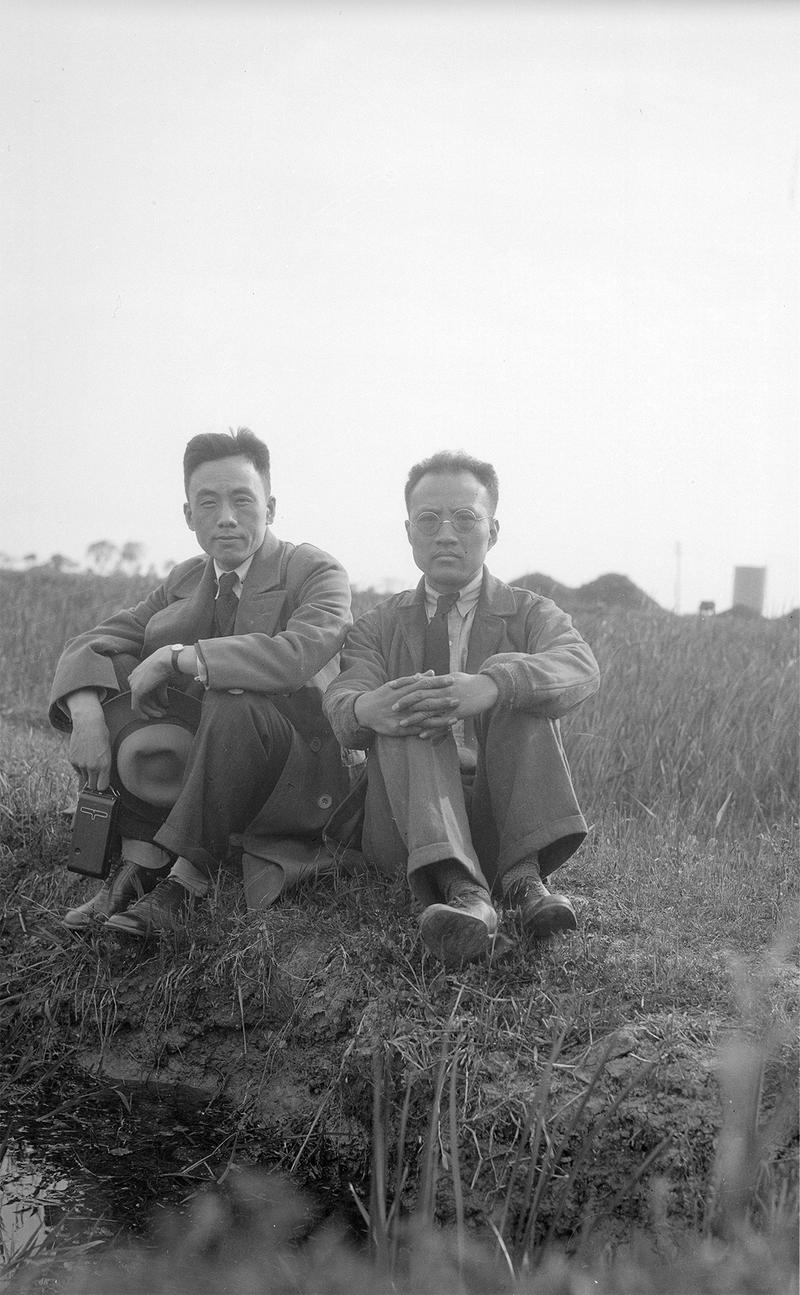 A photo from the 1930s shows Tong Jun (right) and Yang Tingbao in Suzhou, Jiangsu province. (PHOTO PROVIDED TO CHINA DAILY)
A photo from the 1930s shows Tong Jun (right) and Yang Tingbao in Suzhou, Jiangsu province. (PHOTO PROVIDED TO CHINA DAILY)
A two-part exhibition at Shanghai's Jiushi Art Museum and the Jiushi Art Salon is the first public showcase of the life and works of Tong Jun, a pioneer of architectural studies in China.
"In the academic field, Tong is recognized as a scholar whose research went beyond the boundaries between the East and the West, modern and traditional," says Bao Jingmei, deputy director of the Jiushi Art Museum.
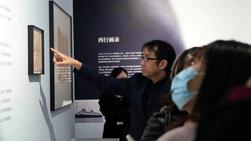 Tong Ming, curator of the exhibition and a grandson of Tong Jun. (PHOTO PROVIDED TO CHINA DAILY)
Tong Ming, curator of the exhibition and a grandson of Tong Jun. (PHOTO PROVIDED TO CHINA DAILY)
Tong (1900-83), also known as Tung Chuin, and his family kept such a low profile that his achievements were little known to the public. In fact, Jiushi Art Salon was designed by Tong and is one of the few modern-style buildings on the Bund today.
"Since the opening of the Jiushi series of art institutions five years ago, we have made it our core mission to present the cultural treasures of Shanghai and the whole world," says Bao. "This year marks the 60th anniversary of the publication of Tong's book Jiangnan Yuanlin Zhi (On Classical Gardens in Southeastern China), which was the first academic documentation of traditional Chinese gardens in the Yangtze River Delta area, and we believe this is a good opportunity to introduce Tong to the public," she adds.
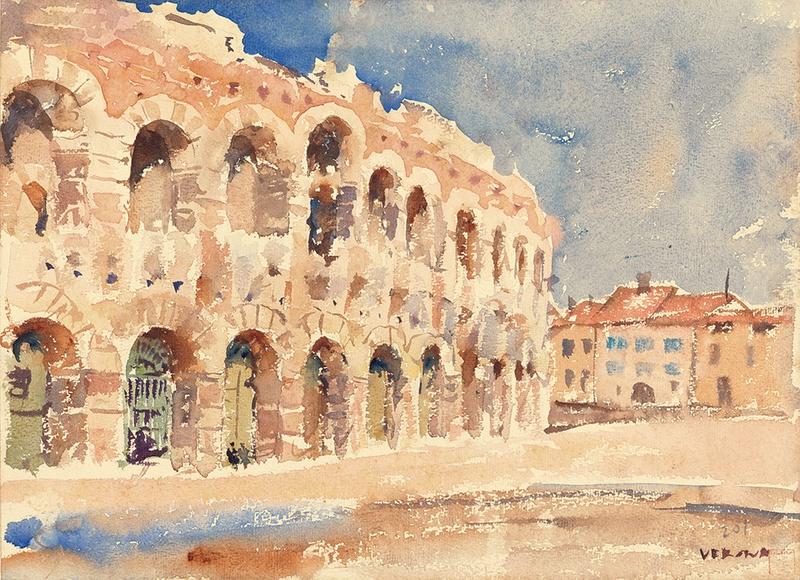 Tong Jun's watercolor painting of the Arena of Verona in Italy. (PHOTO PROVIDED TO CHINA DAILY)
Tong Jun's watercolor painting of the Arena of Verona in Italy. (PHOTO PROVIDED TO CHINA DAILY)
The exhibition consists of two parts: Grand Tour of a Chinese Architect, which opened on Friday at Jiushi Art Museum, featuring more than 80 sketches and watercolor paintings that Tong created during a tour of Europe in 1930; and Gardens in South-Eastern China, running through May 21, at Jiushi Art Salon, featuring his studies of traditional gardens in the Yangtze River Delta area.
Just like his father, who was a Manchurian scholar from Shenyang, Liaoning province, Tong excelled in his studies at Tsinghua College, the predecessor of today's Tsinghua University, before furthering his studies at the University of Pennsylvania in the United States in the 1920s. He graduated with a master's degree in architecture in 1928 and went on to work in architecture firms in Philadelphia and New York. In 1930, he embarked on a four-month tour of Europe, a fairly common practice then among Eastern youths looking to broaden their horizons and better understand the world. For Tong, the period was a chance to study architectural styles in Britain, France, Germany, the Netherlands and Switzerland, as well as learn about European civilizations, says Tong Ming, curator of the exhibition and a grandson of Tong Jun.
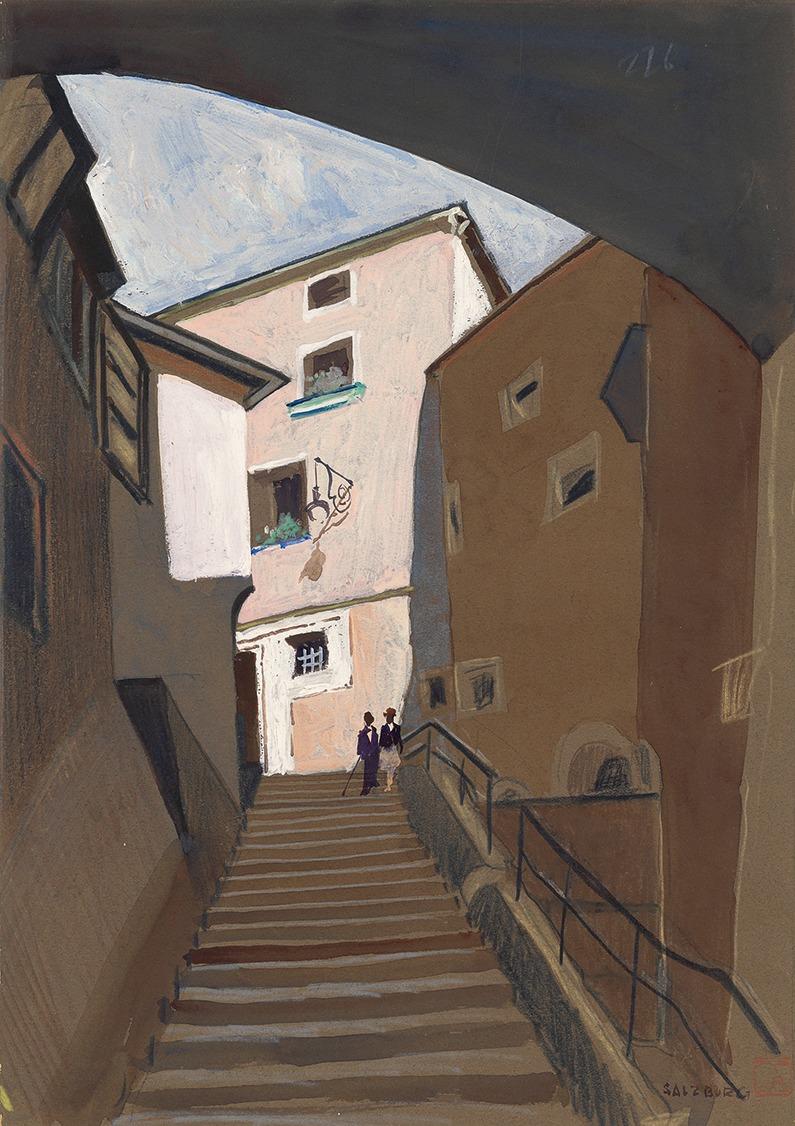 Painting of Salzburg's streets in Austria. (PHOTO PROVIDED TO CHINA DAILY)
Painting of Salzburg's streets in Austria. (PHOTO PROVIDED TO CHINA DAILY)
Tong Jun created more than 300 sketches, drawings and watercolor paintings during his Europe trip in 1930. Although the artworks have never been publicly exhibited, they have always been highly recognized within the architectural community in China because of the techniques employed. In 2003, the artworks were donated to the library of Southeast University in Nanjing, Jiangsu province, where Tong Jun taught architecture after 1952.
"We borrowed them from the university and selected 80 pieces for the show," says Tong Ming, who is an architect and a professor at Southeast University.
"You will notice how his style was more conservative. The orderly depiction of the cathedrals and residences in Britain, his first stop in Europe, are a contrast to the rapid free strokes and colorful rendering of the buildings in Germany, where he was inspired by Bauhaus architecture and modern glass-structured buildings."
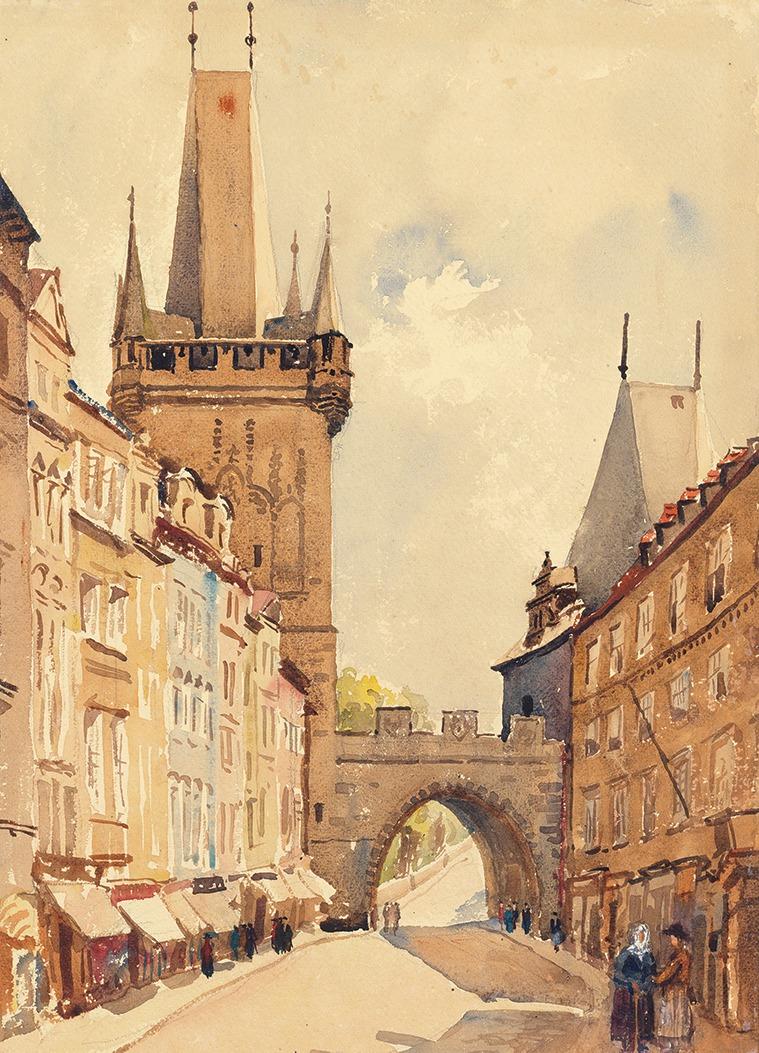 Painting of the towers of Charles Bridge in Prague, Czech Republic. (PHOTO PROVIDED TO CHINA DAILY)
Painting of the towers of Charles Bridge in Prague, Czech Republic. (PHOTO PROVIDED TO CHINA DAILY)
Tong Jun ended his tour earlier than planned to take on the role of a teacher at Northeast University in China for an autumn semester. When the Japanese invasion forced the architecture department to dissolve, he moved to Shanghai, and together with Zhao Shen and Chen Zhi, founded a studio called Allied Architects. The studio later expanded its practice to Chongqing and Guiyang, Guizhou province.
Between 1932 and 1952, Tong Jun was involved in more than 100 projects, including the former Diplomacy Ministry building and the Capital Hotel in Nanjing, and the Metropol Cinema in Shanghai.
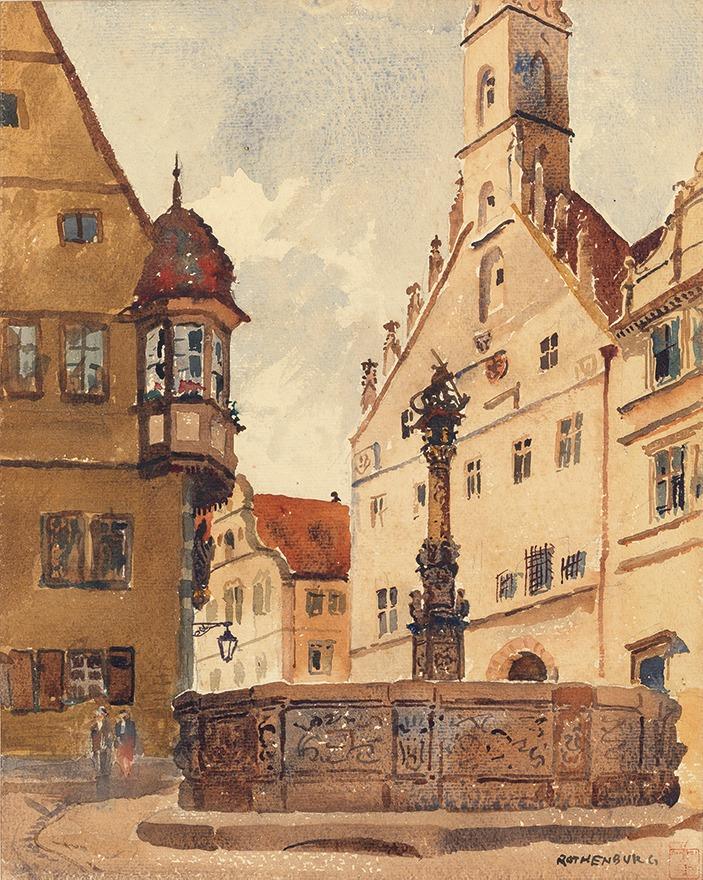 Painting features the Market Square in Rothenburg, Germany. (PHOTO PROVIDED TO CHINA DAILY)
Painting features the Market Square in Rothenburg, Germany. (PHOTO PROVIDED TO CHINA DAILY)
In 1932, Tong Jun started documenting classical gardens in the Yangtze delta region.
"He was impressed by the vigorous culture in the West, and after returning home, he was disappointed to find that classical Chinese gardens, which encapsulated the essence of traditional Chinese aesthetics and philosophy, were decaying and disappearing," Tong Ming says. "He felt obliged to document this beauty and heritage before they were completely destroyed."
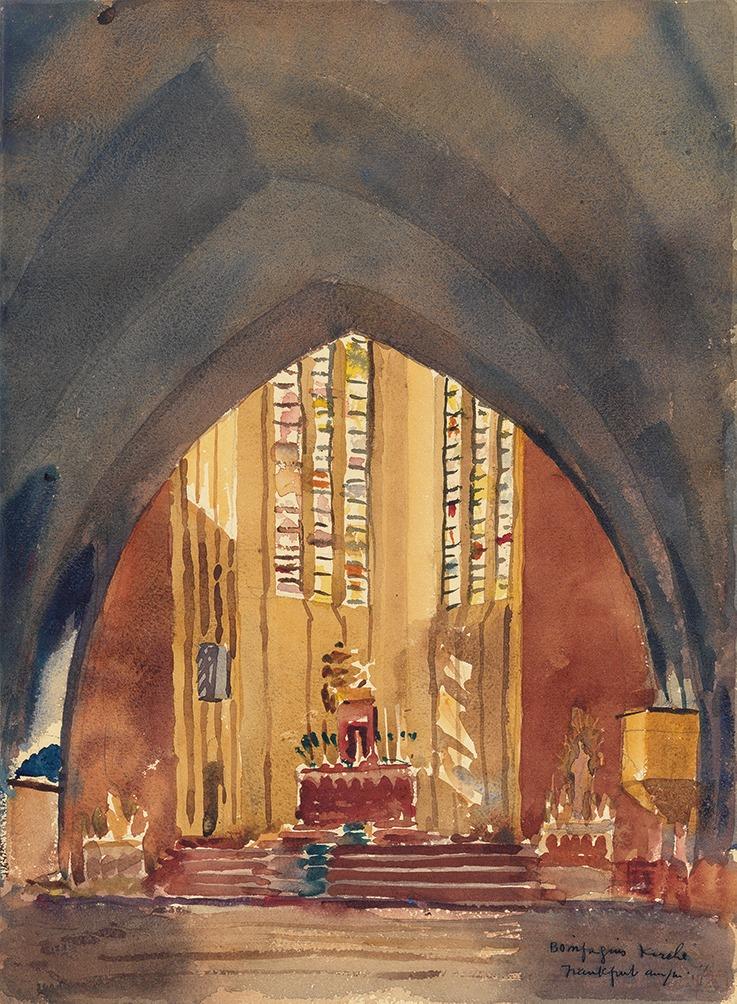 Painting features St. Boniface Catholic Church in Frankfurt, Germany. (PHOTO PROVIDED TO CHINA DAILY)
Painting features St. Boniface Catholic Church in Frankfurt, Germany. (PHOTO PROVIDED TO CHINA DAILY)
Tong Jun's book marked the first time a systematic documentation of the gardens — including maps, photographs and records of the construction and inheritance — was done. While he finished writing the contents in 1937, the book was not published until 1963.
This part of his work is reflected in the exhibition at the Jiushi Art Salon. To pay homage to his grandfather's work, Tong Ming designed the exhibition space to look like a Chinese garden, complete with meandering lanes and cutout windows.
In 1946, Tong Jun began teaching architecture at the Central University in Nanjing (today's Nanjing University), and in 1952, when the country's educational institutions went through major adjustments, the architecture department became an independent institution, which is now called Southeast University where Tong Jun taught later. Tong Ming recalls his grandfather was "neither lovable, nor stern" and was always hard at work.
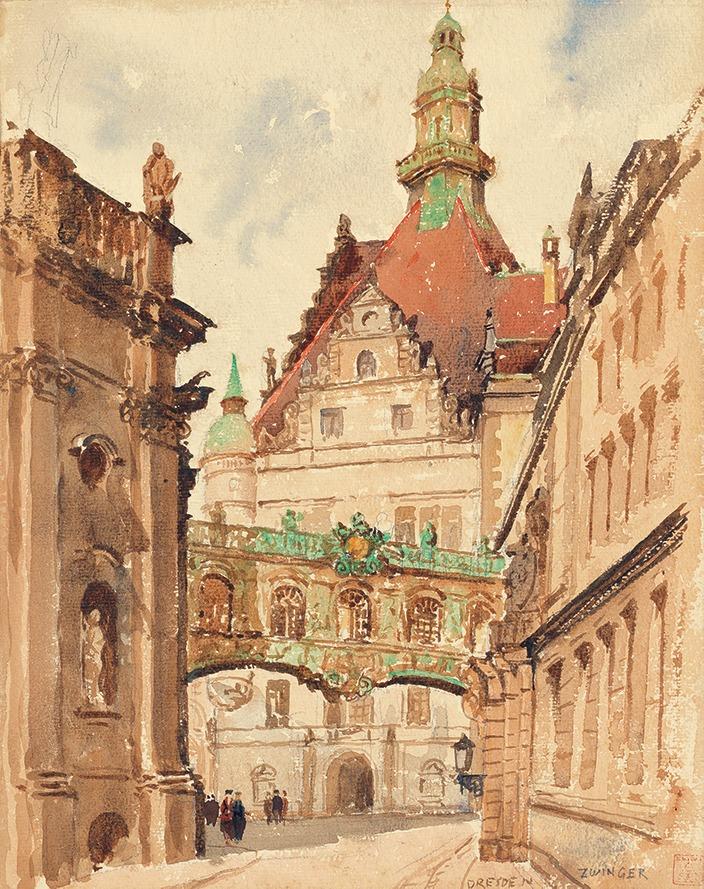 The Georgentor in Dresden, Germany, as drawn by Tong Jun. (PHOTO PROVIDED TO CHINA DAILY)
The Georgentor in Dresden, Germany, as drawn by Tong Jun. (PHOTO PROVIDED TO CHINA DAILY)
In the last few years of his life, Tong Jun suffered from a cancer relapse, and this left him in despair as it meant he could not complete the work he had set out to do, says his grandson.
Tong Jun and his aesthetic analysis of classical Chinese gardens influenced many important architects.
According to Wang Shu, China's first Pritzker Architecture Prize winner (widely considered the Nobel Prize for architecture), Tong Jun's argument that "taste, be it emphasized, counts here much more than mere know-how", and that's a key point in his own architectural theory. Wang says, inspired by Tong Jun, he was able to break the boundary between architecture and gardens in his designs.
If you go
10 am-6 pm, Monday-Sunday, March 18-May 21.
Gardens in South-Eastern China
Jiushi Art Salon, 1F, 230 Beijing Road East, Huangpu district, Shanghai.
Grand Tour of a Chinese Architect
Shanghai Jiushi Art Museum, 6F, No 27 East Zhongshan No 1 Road, Huangpu district, Shanghai.
Contact the writer at zhangkun@chinadaily.com.cn



